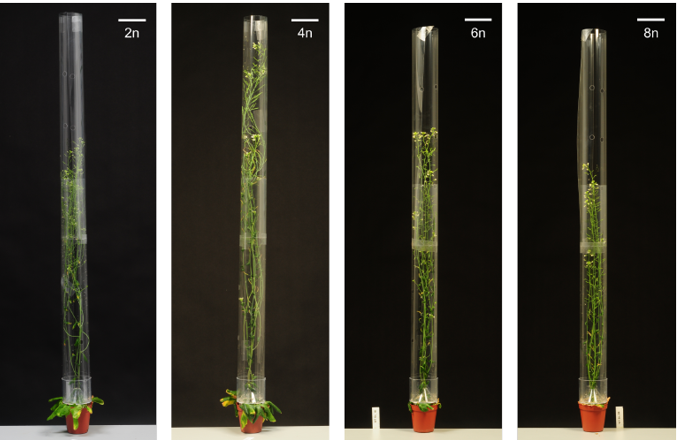Sander Corneillie1,2, Nico De Storme3, Rebecca Van Acker1,2, Jonatan U. Fangel4, Michiel De Bruyne1,2, Riet De Rycke1,2, Danny Geelen3, William G. T. Willats5,ǂ, Bartel Vanholme1,2,†, §, Wout Boerjan1,2,†,§
1 Ghent University, Department of Plant Biotechnology and Bioinformatics, B-9052 Gent, Belgium
2 VIB Center for Plant Systems Biology, VIB, Technologiepark 927, B-9052 Gent, Belgium
3 Department of Plants and Crops, Ghent University, Faculty of Bioscience Engineering, Coupure links 653, B-9000 Gent, Belgium
4 Carlsberg Research Laboratories, 100 Ny Carlsberg Vej, 1799 Copenhagen V, Denmark
5 Department of Biology, The University of Copenhagen, Ole Maaløes Vej 5, Copenhagen DK-2200, Denmark† These authors contributed equally to this work and share last authorship
§ Corresponding authors: Bartel Vanholme; E-mail: bartel.vanholme@psb.vib-ugent.be; Telephone: + 32 (0)9 33 63 13 840. Wout Boerjan; E-mail: wout.boerjan@psb.vib-ugent.be; Telephone: + 32 (0)9 33 13 881.
ǂ Current affiliation: School of Agriculture, Food and Rural Development, Agriculture Building, Newcastle University, Newcastle upon Tyne NE1 7RU, United Kingdom
Polyploidization has played a key role in plant breeding and crop improvement. Although its potential to increase biomass yield is well described, the effect of polyploidization on biomass composition has largely remained unexplored. Here, we generated a series of Arabidopsis (Arabidopsis thaliana) plants with different somatic ploidy levels (2n, 4n, 6n, and 8n) and performed rigorous phenotypic characterization. Kinematic analysis showed that polyploids developed slower compared to diploids; however, tetra- and hexaploids, but not octaploids, generated larger rosettes due to delayed flowering. In addition, morphometric analysis of leaves showed that polyploidy affected epidermal pavement cells, with increased cell size and reduced cell number per leaf blade with incrementing ploidy. However, the inflorescence stem dry weight was highest in tetraploids. Cell wall characterization revealed that the basic somatic ploidy level negatively correlated with lignin and cellulose content, and positively correlated with matrix polysaccharide content (i.e. hemicellulose and pectin) in the stem tissue. In addition, higher ploidy plants displayed altered sugar composition. Such effects were linked to the delayed development of polyploids. Moreover, the changes in polyploid cell wall composition promoted saccharification yield. The results of this study indicate that induction of polyploidy is a promising breeding strategy to further tailor crops for biomass production.
DOI: https://doi.org/10.1104/pp.18.00967
http://www.plantphysiol.org/content/early/2018/10/09/pp.18.00967
